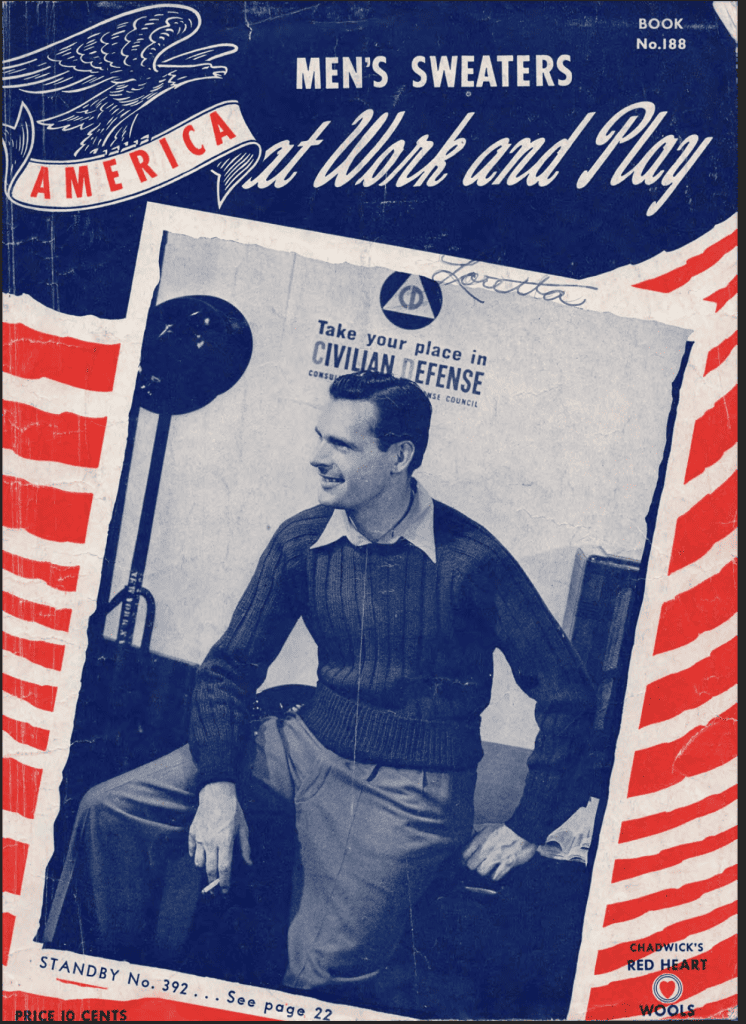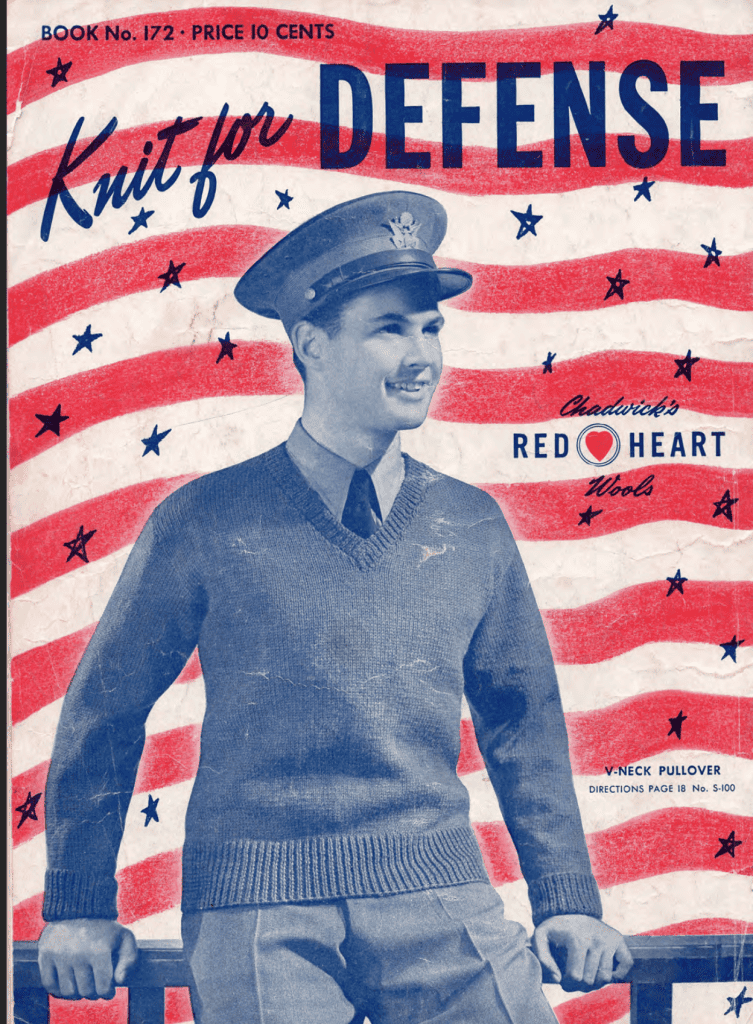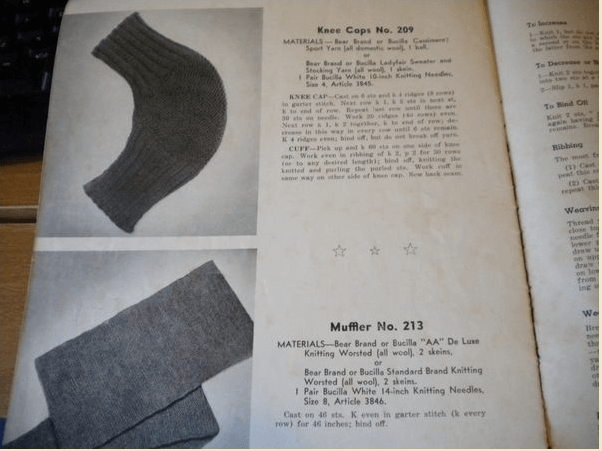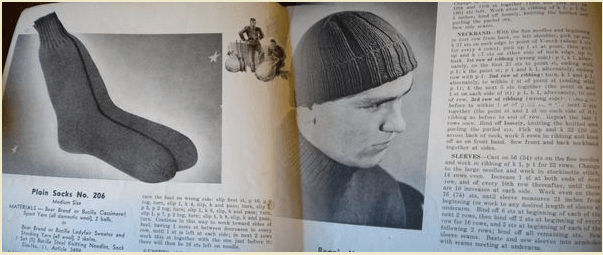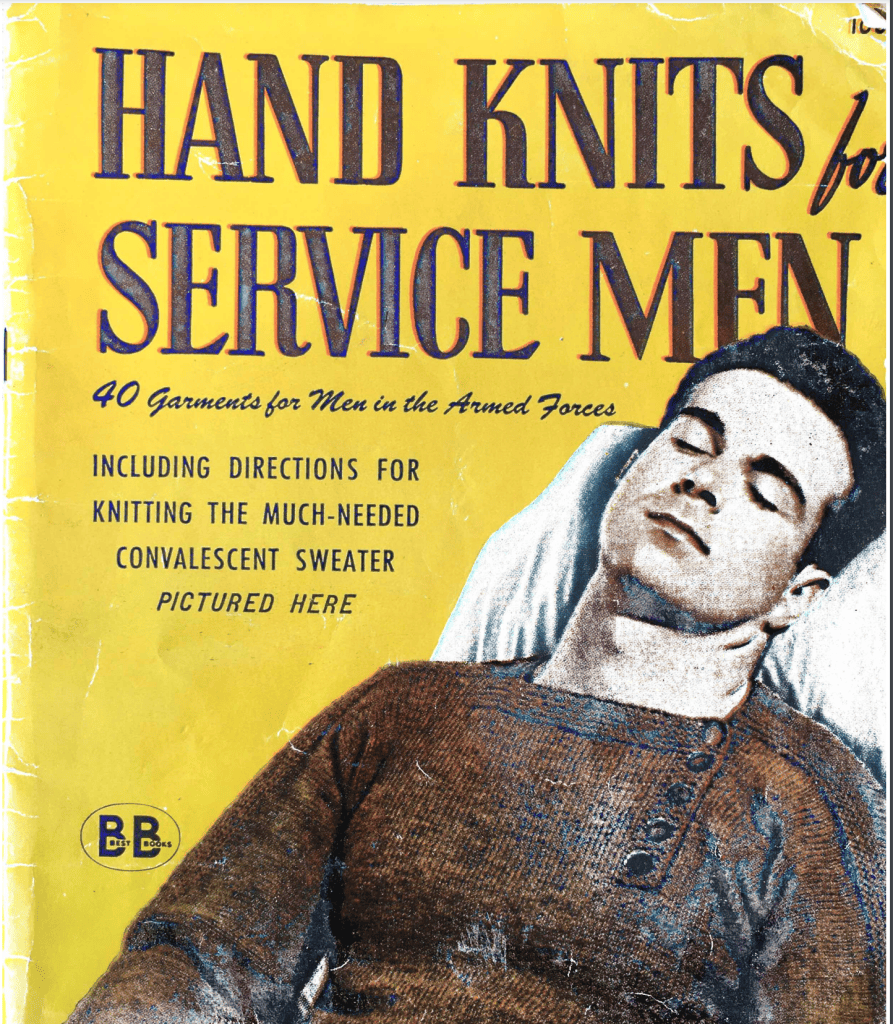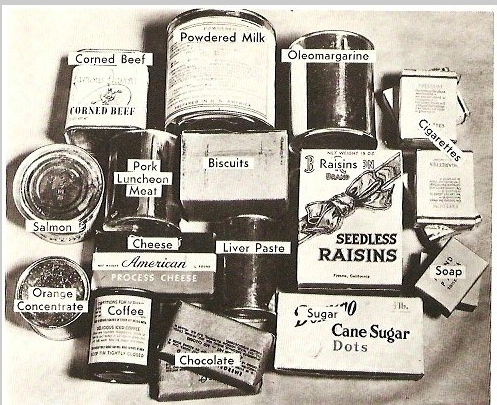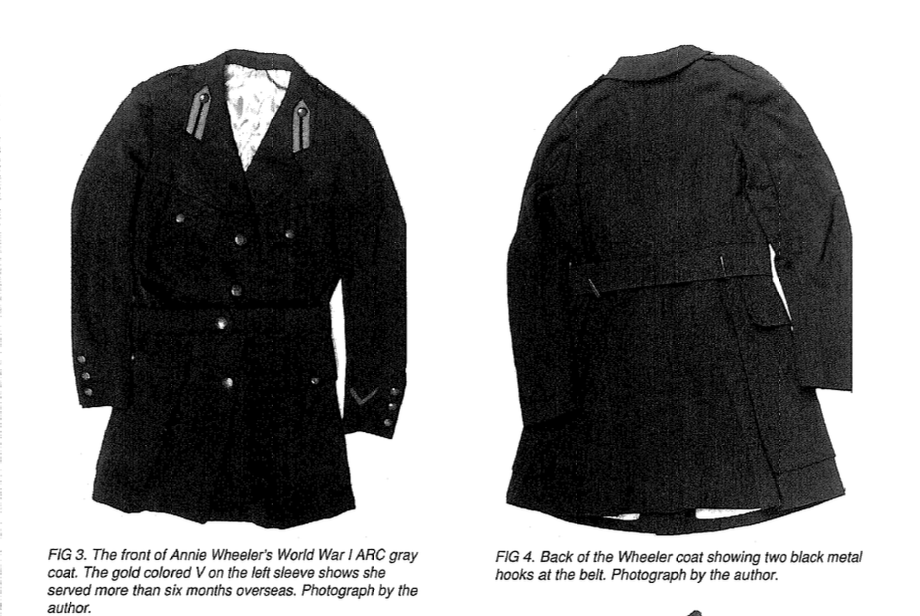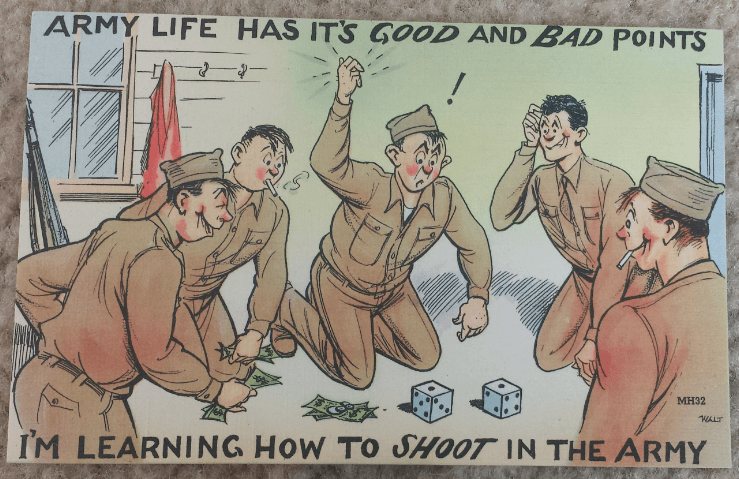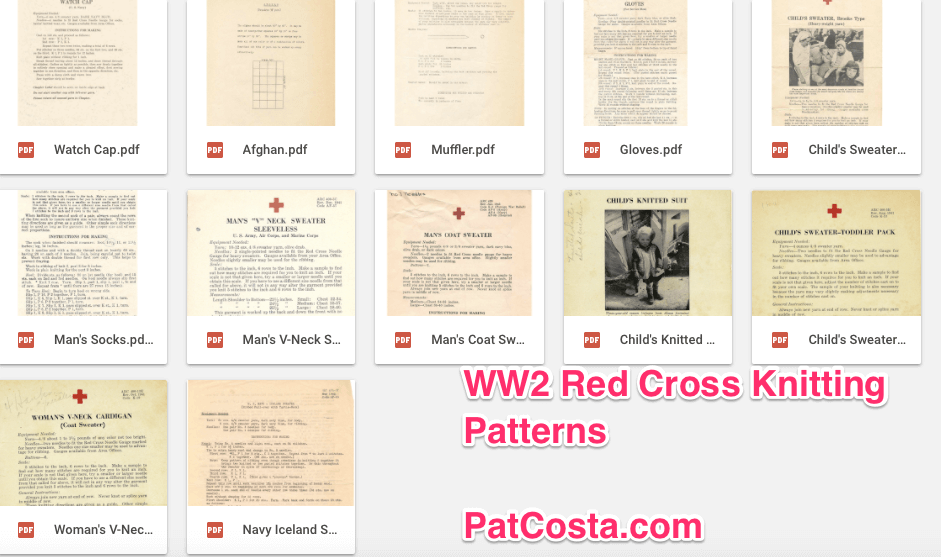
WW2 Red Cross Reproduction Knitting Patterns for WW2 Reenactors
During World War I and again during World War II, the American Red Cross launched nationwide, volunteer-driven knitting campaigns to supply soldiers and war refugees with warm clothing. These volunteer knitters belonged to a Red Cross unit called the Production Corps that also produced bandages and sewn garments (such as pajamas) for veterans and civilian hospitals.
Military knitting patterns were designed to be compatible with soldiers’ and sailors’ uniforms and were required to be knitted in olive drab or navy blue. Production Corps volunteers would also knit from patterns designed for convalescing soldiers, such as the “Walking Cast Toe Sock,” the “Cap for the Bandaged Head” and the “Man’s Coat Sweater.”
The chart below shows some different patterns for knitting. The Wristlets pattern comes courtesy of the Estate of Ray and Anita Sexton, Oneida, TN (*).
During World War II, the Red Cross Production Corps was by far the most popular unit with over 3.5 million members, spread throughout 3,304 chapters. Unlike other volunteer jobs, there was no prerequisite training, and recruitment and task assignments were accomplished quickly. The women, and in some cases the men, that volunteered enjoyed the camaraderie and the fact that workrooms were set up not only at chapter buildings, but also at schools, churches, and other public or private facilities for their convenience.
From 1939 to 1946 the volunteers of the Production Corps made: 63,552,649 garments for civilians and the military 1,403,158 infant garments 31,237,900 kit bags containing cigarettes, playing cards, soap etc. 2,481,951,637 surgical dressings Production Corps volunteers were broken down into committees organized by task. They included surgical dressings, sewing, and knitting.
Detailed instructions, patterns, and supplies were issued by the National Headquarters to chapters and each was assigned a quota to fill. Chapters had volunteers in charge of inspection, planning and supplies, workrooms and equipment, instruction, and packing and shipping
Men’s Sweaters at Work and Play Book No.188
This was a knitting booklet made in 1942 by Chadwick’s Red Heart Wools, a knitting company. It’s 22 pages long and has knitting instructions for the following garments
- The “Blueprint” for America Button-up Sweater
- The “At Ease” Sweater
- The Champion V-neck Sweater
- The Grandstander – a scarf and glove set
- The Match Play Sweater Vest
- The Victory Sweater Vest
- The Defense Worker Button-up Sweater
- The Practical Worker Button-up Sweater Vest
- Top Flighters Sweater Vest
- The Double or Nothing Sweater Vest
- The Football Heroes Pullover Sweater
- The Standby Sweater – which is illustrated on the cover
You can download the Men’s Sweaters at Work and Play Book No.188 as a pdf here.
Knit for Defense Book No. 172
This was a knitting booklet made in 1941 by Chadwick’s Red Heart Wools, a knitting company. It’s 22 pages long and has knitting instructions for the following garments. It has instructions for the following patterns
- Round or Turtleneck Pullover
- Crew Neck Pullover
- Plain gloves and scarf
- Chest Protector
- Helmet with or without ear flats – designed to go under an M1 Helmet
- Mittens
- Sleeveless V-Neck Pullover
- Square Neck Pullover and Cap
- Sleeveless High-Neck Pullover
- Trigger Gloves – gloves that have slots just for your thumb and index finger
- Marksman’s Gloves – gloves that stop at the 2nd joint of a finger
- Plain Sock
- Spiral Sock
- V-Neck Pullover
You can download the Knit for Defense No.172 book as a pdf here.
Practical, Warm Hand Knits for Service Men WW2 Red Cross Knitting Patterns
This is another Red Cross knitting pattern. The booklet is Volume 318, dated 1940. Below are some images from the booklet and external links which explain more about the patterns.
External Links
The links below are a digitized copy of the content found in the Red Cross knitting document, Warm Hand Knits for Servicemen. Read Me First: WWII Knitting FAQ
| WWII Plain Socks | WWII Hats and Helmets | WWII Mittens and Gloves | WWII V-Neck Sweater |
| WWII Turtleneck | WWII Sweater Vest | WWII Ear Muffs, Wristlets, Knee Caps, Muffler |
Hand Knits for Service Men – 40 Garments for Men in the Armed Forces
This is a 26-page book that includes 40 different knitting patterns. It was copyrighted in 1944 by Book Productions Industries Inc and published by Ethel Evans.
The book contains knitting patterns for:
- Heavy Turtleneck with Sleeves
- Army-Navy Pullover
- Turtleneck Sleeveless Pullover
- V-Neck Pullover
- V-Neck Service Pullover
- Service Pullover
- Convalescent Sweater Jacket
- Wheelchair Afghan
- Knit Wheelchair Afghan
- Navy Pattern Afghan
- Cap Helmet
- Balaclava Heavy Weight
- Balaclava Light Weight
- Watch Cap
- Navy Gloves
- Rifle Gloves
- Steel Helmet
- Regulation Helmet
- Cap
- Army Mitts
- Army Gloves
- Officers Navy Gloves
- Wristlets
- Trigger Gloves
- Wristlet with Thumb
- Knee Length Socks
- Turtle Neck Tuck In
- Navy Chest Protector
- Navy Scarf
- Slot Mitts
- Air Force Ascot Scarf
- Merchant Marine Rib Pattern Turtle Neck Sleeveless Pullover
- Hospital Bed Socks
Hand Knits for Servicemen can be downloaded as a pdf here.
Ethel Evans is actually the pen name of Ethel Rodman. She is a minor celebrity in the world of knitting and crocheting, as she published several authoritative books in this manner. Her brother is Edward Ray Goetz, a Hollywood producer, songwriter, and musician, who at one time was married to actress Irene Bordoni.
Ethel’s sister was Dorothy Goetz who at one time was married to Irving Berlin. Ethel and her sister are buried with their parents in Buffalo’s Forest Lawn Cemetery (section 9, Lot 282).
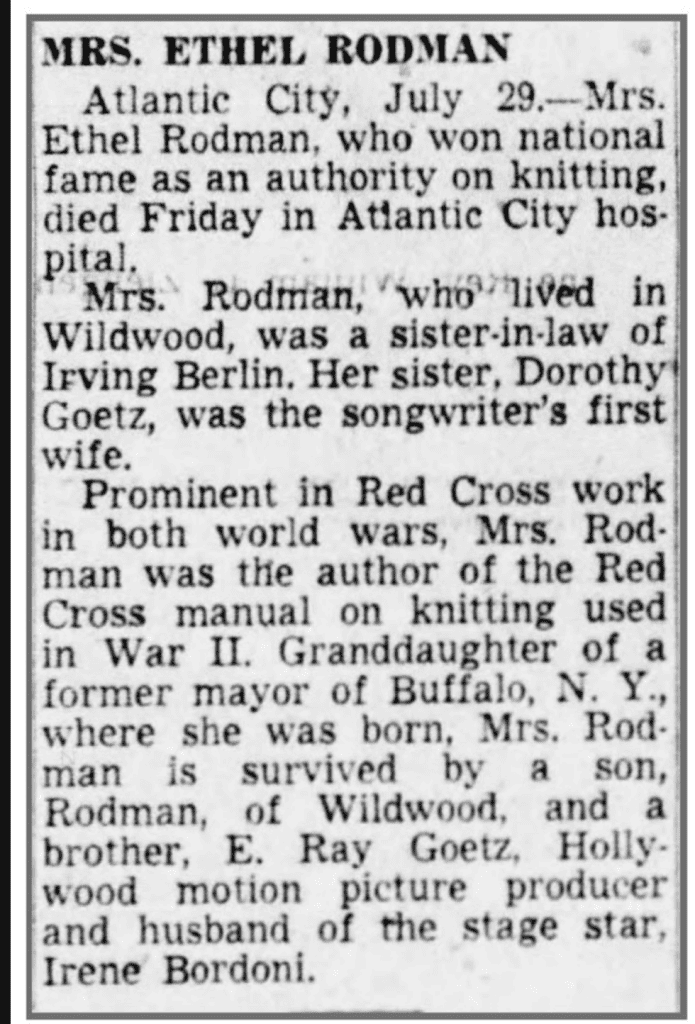
Now, oddly, she has a connection to UFOs. She witnessed a UFO incident called “Incident 88” or “Hackensack Event” because it was reported on Aug 3rd, 1947 in Hackensack, NJ. She sent letters and photos to the Air Force for about a year but stopped near the end of 1948. Incident 88 has a redacted archived copy that you can see.
PostWar: Jack Frost Two Needle Mittens Vol 56
This is a knitting guide made in 1947 by the Jack Frost Yarn Company. The company itself may have first started in 1928 according to the date it was trademarked.
The booklet contains the following patterns. Much of it seems to be kid focused and there may not be much use for WW2 Reenacting but the Men’s or Ladies mittens might work
- 2 types of Infant Mittens
- Thumbless Mittens
- 8 types of Classic Mittens
- Ribbed Mittens
- Norwegian-Type Mittens
- Cable-back Mittens
- Braided-cable Mittens
- Speed-knit Mittens
- Striped Mittens
- Ombre Mittens
- 2 types of Lady’s Mittens
- 2 types of Men’s Mittens
